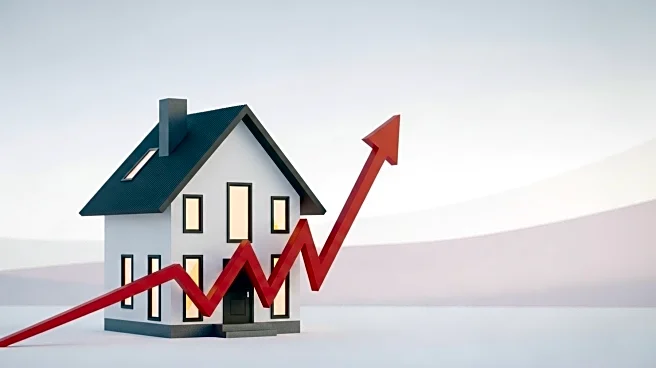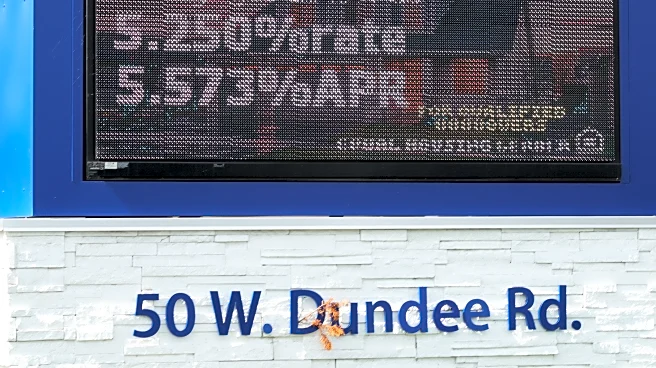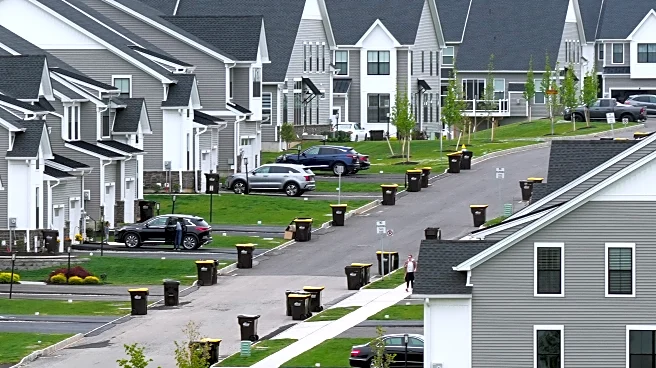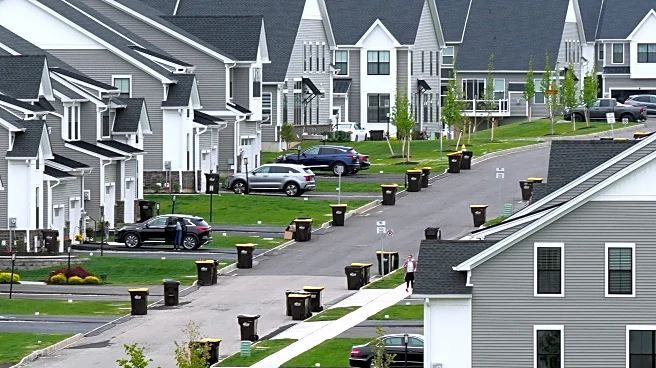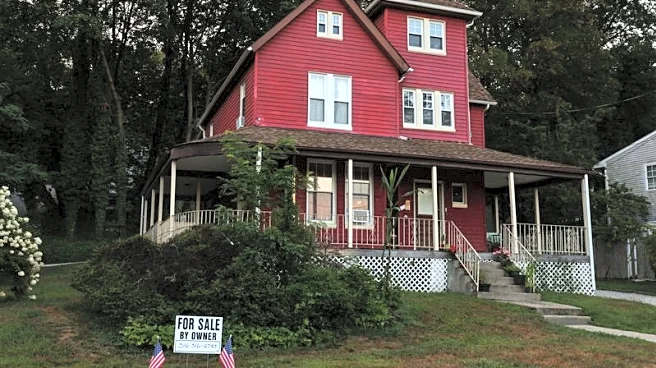What's Happening?
The average rate on a 30-year U.S. mortgage has increased slightly to 6.3% from 6.26%, according to Freddie Mac. This rise follows a four-week decline that had brought borrowing costs to their lowest in nearly a year. Despite the increase, mortgage rates remain near 11-month lows, which has led to a rise in home loan applications by 0.6% last week. Notably, applications for home refinance loans accounted for more than 60% of all applications, as reported by the Mortgage Bankers Association. However, for refinancing to become attractive to a broader range of homeowners, rates would need to fall well below 6%, given that about 81% of U.S. homes have a mortgage rate of 6% or lower.
Why It's Important?
The slight increase in mortgage rates could have significant implications for the housing market, which has been in a slump since 2022. Higher rates can deter potential buyers and those looking to refinance, impacting overall housing market activity. The current rate environment is influenced by the Federal Reserve's interest rate policies and bond market dynamics. As the Fed signals a cautious approach to future rate cuts, mortgage rates may continue to fluctuate, affecting homeowners' decisions to refinance and the broader housing market recovery.
What's Next?
Economists expect the average rate on a 30-year mortgage to remain near the mid-6% range this year. The Federal Reserve's future interest rate decisions will be closely watched, as they could influence mortgage rates further. Homeowners and potential buyers will need to monitor these developments to make informed decisions about refinancing or purchasing homes.


